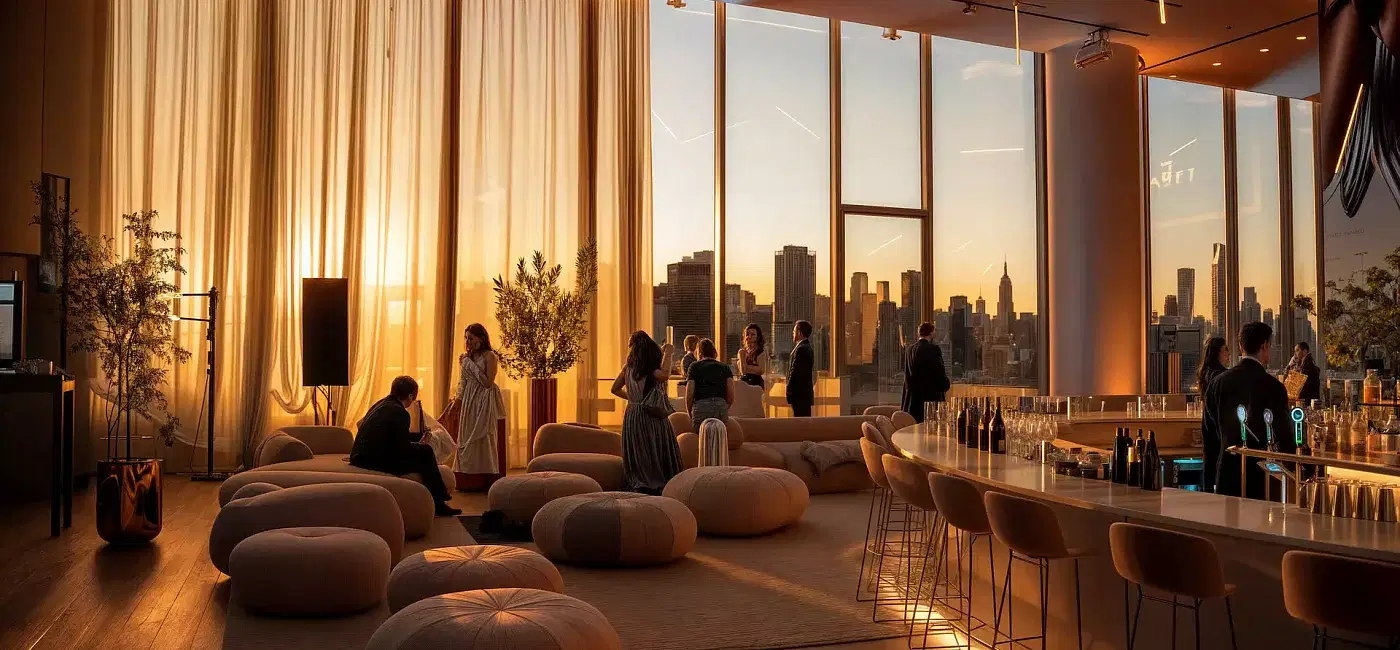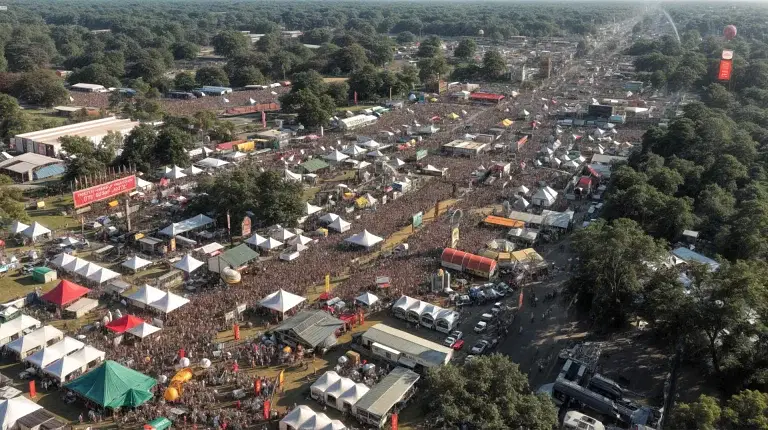In the ever-evolving landscape of event management, a new trend is taking center stage in 2024: micro-events. As venue managers, we’re witnessing a significant shift in how people gather, celebrate, and conduct business. The era of massive conventions and sprawling festivals isn’t over, but it’s certainly sharing the spotlight with a more intimate counterpart. This blog post delves into the world of micro-events, exploring why they’re gaining popularity, how traditional venues can adapt to accommodate them, and the unique opportunities they present for both event organizers and attendees.
What are Micro-Events?
Micro-events are small-scale gatherings typically hosting between 10 to 100 attendees. These events prioritize quality interactions, personalized experiences, and focused content over large crowds and broad appeal. They can range from corporate strategy sessions and product launches to intimate weddings and niche hobby meetups. The key characteristic of a micro-event is its emphasis on creating a tailored, immersive experience for a select group of participants.
The Driving Forces Behind the Micro-Event Trend
- Post-Pandemic Caution: While large gatherings have resumed, many people still prefer smaller, more controlled environments.
- Quality Over Quantity: Attendees and organizers alike are prioritizing meaningful connections and experiences.
- Sustainability Concerns: Smaller events often have a reduced environmental impact.
- Technological Advancements: Improved virtual components allow for hybrid events, expanding reach without increasing physical attendance.
- Personalization: Smaller groups enable more customized, attendee-specific content and experiences.
Adapting Traditional Spaces for Micro-Events
As venue managers, the rise of micro-events presents both challenges and opportunities. Here’s how we can adapt our spaces to cater to this growing trend:
- Flexible Spaces:
Create modular environments that can be easily reconfigured for different group sizes. Invest in movable partitions, adjustable lighting, and versatile furniture. This flexibility allows you to transform a large ballroom into several intimate settings or open up smaller rooms for a more spacious feel. - Technology Integration:
Upgrade your venue’s technological infrastructure to support hybrid events. This includes high-speed internet, state-of-the-art audiovisual equipment, and interactive displays. Consider installing 360-degree cameras and sound systems that can capture the essence of the micro-event for virtual attendees. - Intimate Atmospheres:
Design cozy, welcoming spaces within your venue. This might involve creating lounge areas, breakout rooms, or even outdoor spaces like rooftop gardens or courtyards. The goal is to facilitate close interactions and conversations. - Customization Options:
Offer a range of customization options to event organizers. This could include adjustable mood lighting, personalized signage, or the ability to brand smaller spaces effectively. The more tailored the space feels, the more successful the micro-event will be. - Catering for Small Groups:
Develop relationships with local caterers who specialize in small-batch, high-quality offerings. Consider installing small kitchens or food prep areas near micro-event spaces to facilitate fresh, personalized dining experiences.
Benefits of Micro-Events for Venues:
While adapting to micro-events requires some investment, the benefits for venues are substantial:
- Increased Booking Frequency:
With the ability to host multiple small events simultaneously, venues can increase their overall booking frequency and revenue. - Diverse Client Base:
Micro-events attract a wide range of clients, from startups and small businesses to luxury brands and niche interest groups, broadening your venue’s appeal. - Off-Peak Utilization:
Smaller events are often more flexible with their timing, allowing venues to fill traditionally off-peak hours and days. - Reduced Wear and Tear:
Smaller gatherings generally result in less wear and tear on facilities compared to large-scale events. - Enhanced Reputation:
Successfully hosting intimate, high-quality events can boost a venue’s reputation and lead to positive word-of-mouth marketing.
Strategies for Marketing Micro-Event Spaces
To capitalize on the micro-event trend, venues need to adjust their marketing strategies:
- Highlight Flexibility: Showcase your venue’s ability to transform and accommodate various event sizes and styles.
- Emphasize Intimacy: Use visual marketing to demonstrate how your space can create cozy, personal atmospheres.
- Showcase Technology: Promote your venue’s technological capabilities, especially for hybrid events.
- Target Niche Markets: Develop marketing campaigns aimed at specific industries or interest groups that frequently host micro-events.
- Offer Packages: Create all-inclusive micro-event packages that simplify the planning process for organizers.
Case Studies: Successful Micro-Events
To illustrate the potential of micro-events, let’s look at a few successful examples:
- Tech Startup Product Launch:
A software company used our venue’s sleek conference room and adjacent outdoor terrace to host a 50-person product launch. The intimate setting allowed for hands-on product demonstrations and one-on-one interactions with key clients and media. - Culinary Masterclass:
A renowned chef utilized our small-scale kitchen and dining area to conduct a series of 20-person cooking classes. The limited group size ensured each participant received personal attention and a truly immersive experience. - Corporate Strategy Retreat:
A multinational corporation booked our secluded meeting spaces for a 3-day strategy retreat with their top 30 executives. The private setting and customized amenities facilitated focused discussions and team-building activities.
Challenges and Considerations
While micro-events offer numerous advantages, there are challenges to consider:
- Revenue Per Event:
Smaller events may generate less revenue individually, requiring a shift in pricing strategies. - Staffing:
Managing multiple simultaneous micro-events may require more staff or different staffing structures. - Marketing Efforts:
Attracting a steady stream of micro-events may require more intensive and targeted marketing efforts. - Balancing Act:
Venues need to strike a balance between catering to micro-events and maintaining capacity for larger gatherings.
The Future of Micro-Events
As we look ahead, the micro-event trend shows no signs of slowing down. In fact, we anticipate further evolution in this space:
- AI-Driven Personalization:
Artificial intelligence will play a larger role in customizing micro-events, from suggesting optimal room layouts to personalizing attendee experiences. - Sustainability Focus:
Eco-friendly practices will become even more critical, with micro-events leading the way in sustainable gathering practices. - Virtual Reality Integration:
As VR technology improves, we may see more events incorporating virtual elements, allowing for even smaller physical gatherings with a broader virtual audience. - Niche Specialization:
Venues may start to specialize in specific types of micro-events, becoming go-to locations for particular industries or event styles.
Conclusions
The rise of micro-events represents a significant shift in the event management landscape. For venue managers, this trend offers exciting opportunities to diversify our offerings, attract new clients, and create truly memorable experiences. By adapting our spaces, embracing technology, and focusing on personalization, we can position our venues at the forefront of this growing movement.
As we navigate this new era of gatherings, the key to success lies in our ability to remain flexible, innovative, and attuned to the changing needs of event organizers and attendees. The intimate nature of micro-events allows us to showcase the best of what our venues have to offer, creating spaces where connections are forged, ideas are born, and unforgettable moments are created.
In embracing the micro-event trend, we’re not just adapting to a new market demand – we’re participating in reshaping the very nature of how people come together in 2024 and beyond. It’s an exciting time to be in venue management, and the future of micro-events promises to be as dynamic and engaging as the gatherings themselves.








